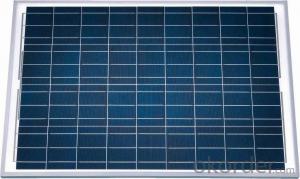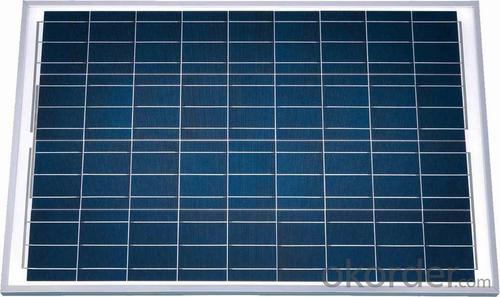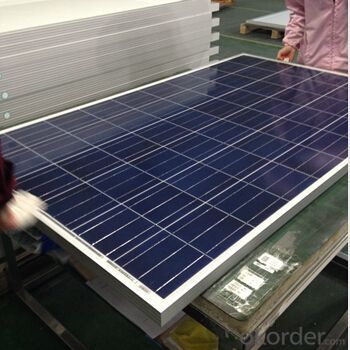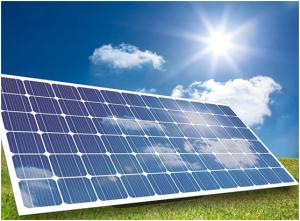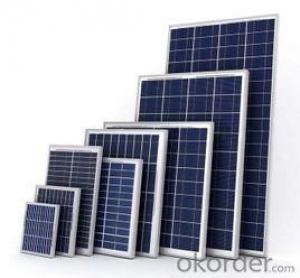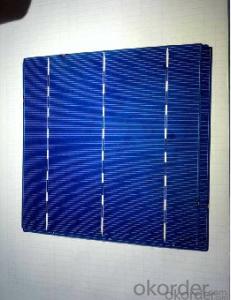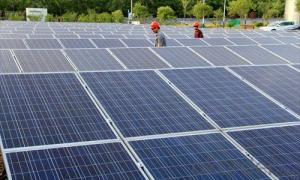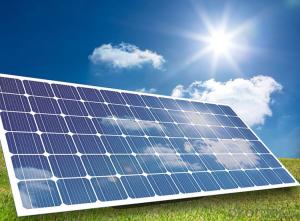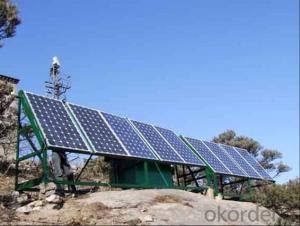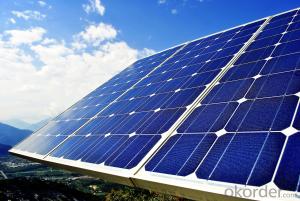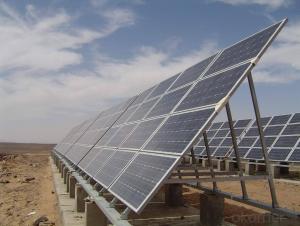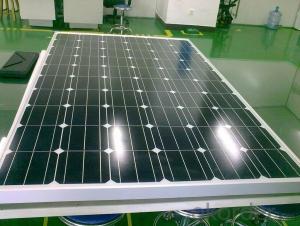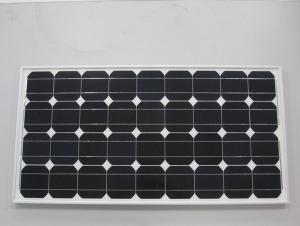Q Cells Solar Panels Price - CE and TUV Approved High Efficiency 150W Poly Solar Panel
- Loading Port:
- Shanghai
- Payment Terms:
- TT OR LC
- Min Order Qty:
- 10000 watt
- Supply Capability:
- 20000000 watt/month
OKorder Service Pledge
OKorder Financial Service
You Might Also Like
Specification
Product Description:
1.Structure of Polycrystalline Silicon Solar Panel
I. High efficiency crystalline silicon solar cell. Even if under the weak light, the solar module can produce maximum power output.
II. Tempered glass (toughened glass): Anti-reflecting coating and high transmission rate glass increase the power output and mechanical strength of solar module.
III. EVA and TPT: Using high quality EVA and TPT to prevent destroying and water.
IV. AI frame: Without screw, rner connection. 6 holes on the frame can be installed easily.
V. Junction box: Multi function junction box with water proof.
VI. Long lifetime: ≥25 years; Less power decrease.
VII. Good performance of preventing from atrocious weather such as wind and hails.
VIII. Resisting moisture and etching effectively, not effected by geology.
IX. The certificate issued by international authority: UL, TUV, IEC, CE.
2.Characteristics
1)Manufactured according to international quality and Environment Management
System (ISO9001, ISO14001)
2)High efficiency crystalline silicon solar cells
3)High transmission Iow iron tempered glass, strong mechanical resistance
4)Anti-ageing EVA and excellent anti-climate back sheet
5)Anodized aluminum frame improves load resistance capabilities for heavy wind loads.
6)Standard waterproof junction box
7)High endurance to different weather
8)Good and friendly package with less transportation and storage space.
3.Warranty
1)10 years limited manufacturing warranty
2)10 years for 90% of warranted minimum power
3)25 years for 80% of warranted minimum power
4.The Pictures of Solar Panels
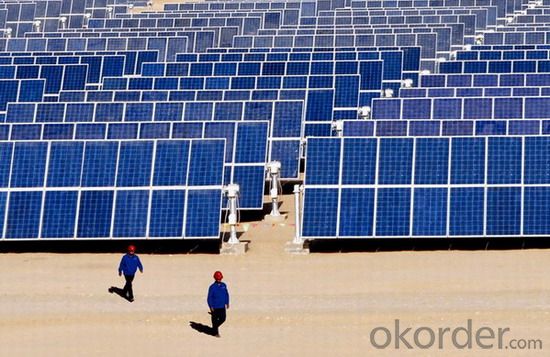
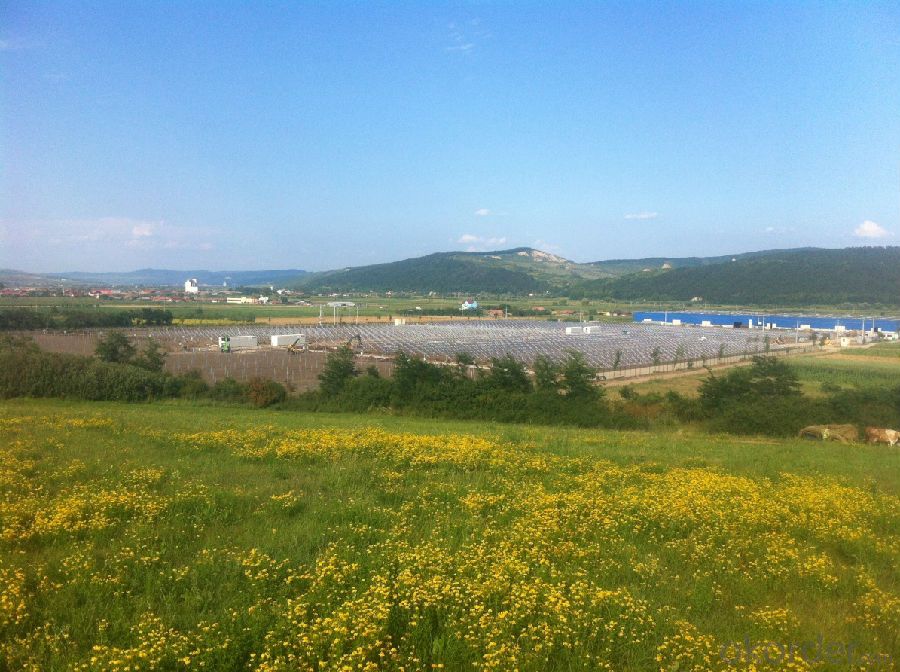
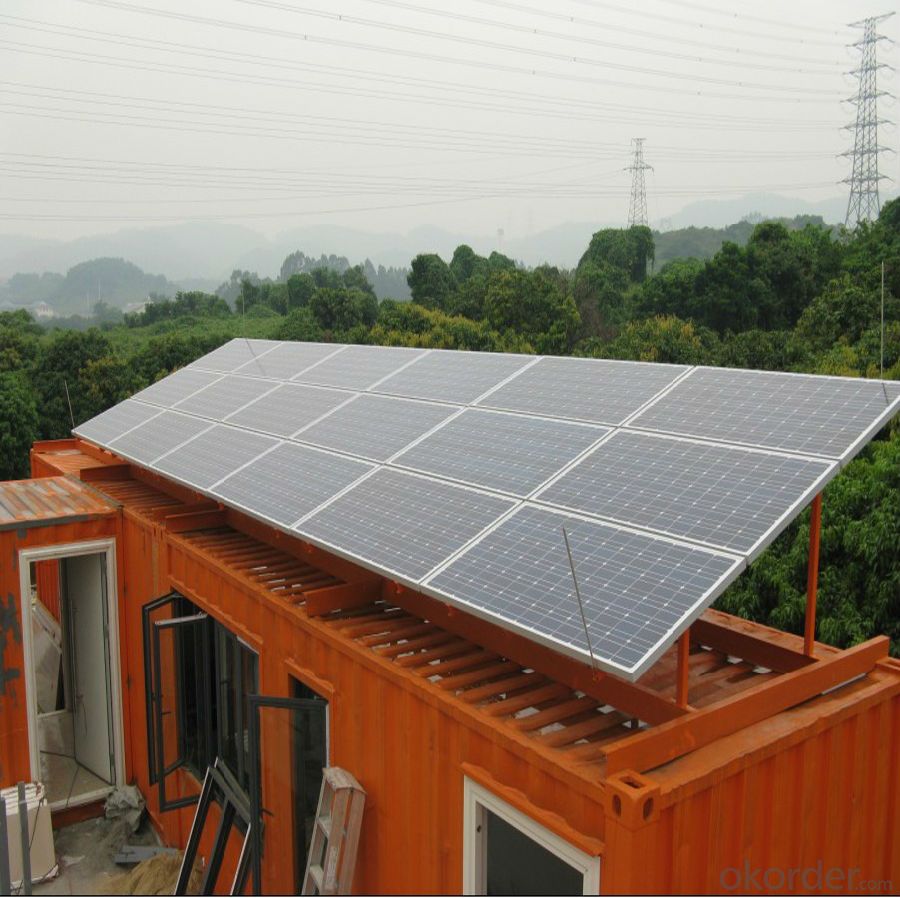
5. Production Flow
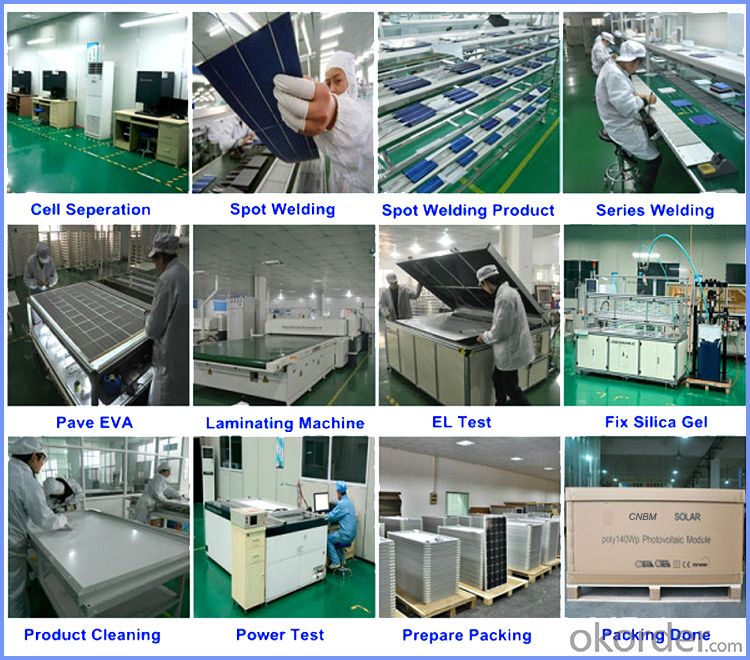
6. Packing Details
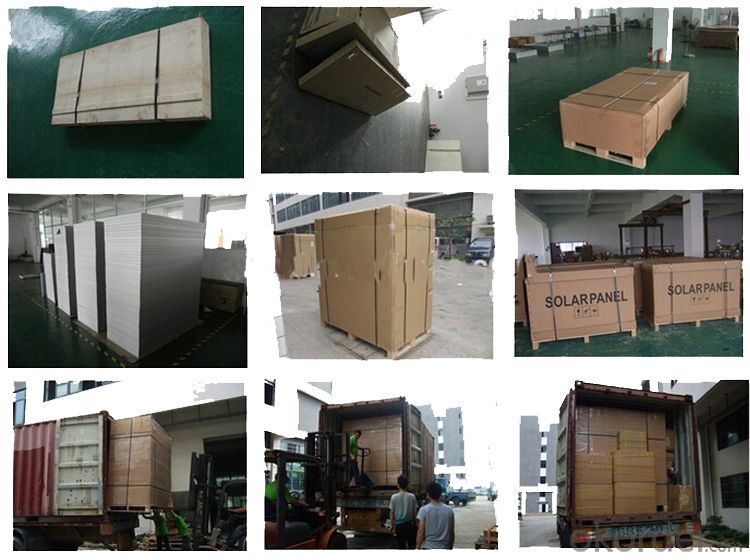
7. Use For
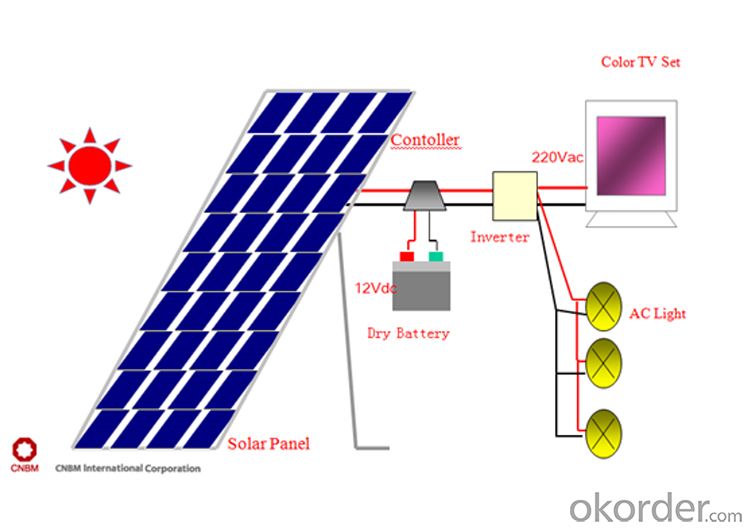
- Q: What in the solar panel wares out so that the panel can not convert the suns energy to electric energy? Please post were you get answers.
- They really don't stop working unless there is some sort of manufacturers deficiency, where a connecting tab(wire) is broken. Generally their output just decreases over the years. There are plenty of solar panels over 40 years old still producing electricity, which is 0 years past the typical 30 year manufacturers waranty.
- Q: Can solar panels be used for powering remote monitoring systems?
- Yes, solar panels can be effectively used for powering remote monitoring systems. Due to their ability to generate electricity from sunlight, solar panels provide a reliable and sustainable power source for remote locations where access to grid electricity may be limited or non-existent. By harnessing solar energy, these panels can provide continuous power to remote monitoring systems, enabling them to function and transmit data without the need for traditional electricity sources.
- Q: What does it take to install the solar panel? Cable wires to power source or fuse box? Anything else?How does the cable wires stay on the solar panel?
- How does the cable wires stay on the solar panel? With wire retention clips (4 per module) that are used to wrap the wire on the underside of the module frame. The home run cables to the transition box (converts between types of wire with no electrical transformation occuring) or combiner box (joins multiple source circuits in parallel, with the positives fused for safety) are usually tied along the racking system components, and with conduit sections used as needed. Racking is another big part of the installation. Don't just make your own homemade wooden rack, as these will weather away to nothing very easily, and cause great failures. GET a professionally designed metal racking system. PV modules are EXPENSIVE. Don't let the racking system cause them to break. It also requires the inverter, if you intend it to connect to the main electric service. If using multiple inverters, you need an AC combining panelboard to join them prior to entering the main electric service. Otherwise, you need to think about how else you might be using them. If you are charging batteries, you need a charge controller.
- Q: Which of these units determines how much electric energy a solar panel can generate?
- Light is power in the form of electromagnetic radiation from the sun. We receive about 000 watts per square meter on a sunny day. The solar panels do convert that sunlight into electrical power at a little less than 25% efficiency. Light intensity and power per square meter (W/m^2) are closely related. The more intensity, the more watts per square meter. So the answer is : Yes, from light intensity which directly proportional to watts per square meter
- Q: When you add a load resistor to a PV panel (Solar panel) of 00 ohms what happens to the voltage produced from the cellAlso, as the resistance increases, how does this affect the output voltage
- Look at the graph data that looks like a rotated L. That is what voltage as a function of current characteristically behaves. The highest voltage value is called open circuit voltage (Voc). The current at lowest voltage value is called short circuit current (Isc). If you notice, a second curve is plotted that looks like a hill. That curve is power output as a function of voltage. At the peak of said hill, you get the most utility of your PV module, as you output the maximum power possible, and that is the nameplate value for the PV module's power rating.
- Q: Can solar panels be used to power a greenhouse?
- Yes, solar panels can be used to power a greenhouse. Solar panels produce electricity by converting sunlight into energy, which can then be used to power various devices and systems, including heating, cooling, lighting, and ventilation in a greenhouse. This renewable energy source helps reduce reliance on traditional power sources and can provide a sustainable and cost-effective solution for powering a greenhouse.
- Q: The battery is 9ah and the solar panel is 20w
- despite the statements to the contrary, using a solar panel to charge a battery is not rocket science. first lets look at you panel. panels normally have a spec for open circuit voltage (probably 20 volts for yours) operating power (4.4 volts at .4 amps is usual for 20 watt panel) and short circuit current (probably 2 amps in your case). if this panel is connected to a 2 volt battery, it will develop 20 watts of charge current in full sun. if this panel is connected to a 6 volt battery, it will work closer to the short circuit current or about .8 amps. doing the math this is a 7.2v x ,8= 3 watt charger for 6 volt batteries. while it is less efficient than when working at 2 volts, it will still work pretty good and no regulator is needed if you remember to disconnect the panel after 5 hours of full sun. if you want to walk away and have it run automatically, then you will need to find a 6 volt charge controller.
- Q: are solar panels just a photodiode?A Photodiode converts light into either current or voltage? Right?
- Yes, so are camera sensors. Except in cameras they're specially desgined to reduce noise.
- Q: I am building a solar car for the energy wiz competition and I was wondering how I could possibly get my solar panel to shift sideways
- having solar panels move like that on a mobile platform is inadvisable -- especially if there is a dynamic wind load resulting from the motion of the mobile platform. Even having a tilt mechanism is dubious at best. think of what limited marginal gain would be gained by mounting a small solar panel on the moon roof of a car. (ultimately, the best answer is to turn the car so that it's angle to the sun is optimal -- but the road/travel direction constraints are what ultimately prohibit that.) while there are ways to build sliding panels, the weight constraints would interfere with your weight/thrust ratios to the point of futility. if you really need that panel somewhere else, don't slide it out of the way, just buy another panel and mount it there. it's more expensive, but it's actually the cheapest solution in terms of design on a mobile platform.
- Q: I have four power packs for solar lights. They have 3 AA .2volt batteries of 2450 mAh capacity installed in series for a total supply voltage of 4 volt maximum for the lights. I want to charge all four packs at once off a single 6 volt solar panel. With the four packs wired in parallel, what capacity output (wattage) panel do I need to charge the batteries in an 8 hour day?
- 325 mAh+ losses so maybe 3.2Ah to 3.5Ah.
Send your message to us
Q Cells Solar Panels Price - CE and TUV Approved High Efficiency 150W Poly Solar Panel
- Loading Port:
- Shanghai
- Payment Terms:
- TT OR LC
- Min Order Qty:
- 10000 watt
- Supply Capability:
- 20000000 watt/month
OKorder Service Pledge
OKorder Financial Service
Similar products
Hot products
Hot Searches
